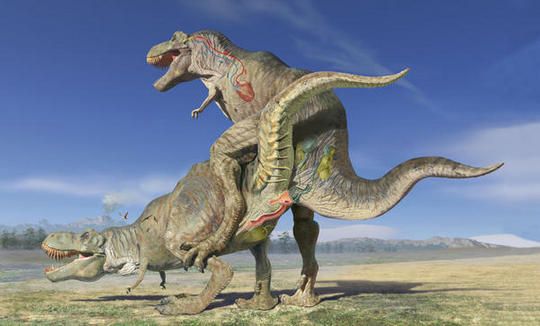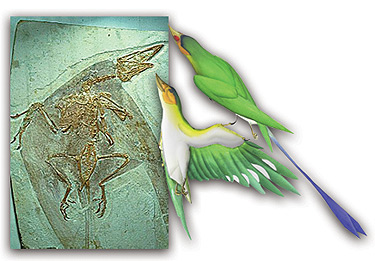Among the many issues with the fossil record is the case of gender identification. In modern organisms, it is usually pretty easy to tell which members of a particular species are the males and which are the females. This can either be through consistently perving on them to figure it out during copulation, or some aspect of their morphology, such as antlers, or you know, a penis or vagina. When it comes to fossil though, we often don’t find these typical gender-distinctive aspects of morphology preserved, as they are usually lost in one form or another to the ravages of time and the process of fossilisation.
The concept of sexual dimorphism, two different gender-dependant morphologies within the same species, has a long and vigorously debated history. Many argue that we can’t be sure that potential gender-specific variations aren’t simply differences between species, or that such structures may have served another purpose than gender distinction or sexual selection. Rather nicely, Dave Hone talks about this in a recent Palaeocast episode, and our latest episode is dedicated to the concept of sexual selection in the fossil record with Rob Knell. Worth a listen for some background!
As I mentioned in the last blog post, there’s a new study out on gender identification in the early bird Confuciusornis sanctus, an important species from the Early Cretaceous of China, where many of these feathered dinosaurs have been found. The authors used a destructive technique known as osteohistology, which involves looking at the cross section of a bone to look at the different types of tissue present. Studies of this sort are quite frequent, as they can tell us about the growth rates and biology of extinct organisms, which is pretty cool! Here, the study reports the finding of medullary bone in the long limb bones of a specimen of C. sanctus. Medullary bone is a tissue found only in reproductively active female birds (not present in crocodilians), which is a pretty cool discovery on its own, if original. Medullary tissue is thought to act as a reservoir for calcium, a mineral that is essential for the building of calcareous eggshells, so is a reasonable indicator of gender.
This ties in quite nicely with a previously unconfirmed hypothesis that male specimens of C. sanctus possessed two long tail feathers (rectrices) for display, whereas they were absent in females (the fossil analysed here did not have any rectrices preserved). This reinforces that the lack of rectrices in some specimens is likely not to be from moulting, ontogeny (individual growth) or a taphonomic (preservational) bias.
The reports of medullary bone are not new in fossils though. They have been reported in the past in many dinosaurs, including Tyrannosaurus rex, so why does this warrant publication in Nature Communications again? Is it particularly ground-breaking or novel for palaeontology? This is of course a subjective question, and probably has a similar answer as discussed in the previous post; every new study or new species of feathered dinosaur might not represent a scientific breakthrough or leap forward of some kind, as might be expected of many Nature group publications, but damn everyone likes a cuddly theropod.
Reference:
Chinsamy et al. (2013) Gender identification of the Mesozoic bird Confuciusornis sanctus, Nature Communications, DOI: 10.1038/ncomms2377


